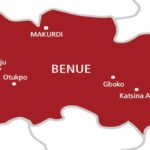Not so many books remind us of our childhood, even the ones that do, do not really capture the sight smell, and sound of childhood in a metropolitan city in Northern Nigeria. Obande has however succeeded in presenting us with a story in which we cast ourselves back into the past, in the early and mid-80s when ignorance and innocence enshrouds us. This story could equally have been set in Jos, Kano, or Yola, without altering its impact.
A Miracle for Daddy comes quite close to Adichie’s Purple Hibiscus, or John Grisham’s A Painted House in apt description of images, logic, psyche, beliefs, and perception of a child within the age range of 6-8. Here, the reader is wholly meant to depend on the child-narrator’s perspective, with its attendant inexplicability, to still decipher messages intended to be sent by the writer.
From myths to folktales, magic to miracles, food to emotions, Obande’s A Miracle for Daddy summarily tells of Otseme, the central character, who enjoyed love care and attention, especially from an adorable father in a lower middle class family in Kaduna until tragedy struck; his father suffers a serious injury in an accident, and compelling the remaining story to take on a different course. With their father in the hospital, and their mother by his bedside, Otseme and his older sister, Oyigwe, were kept in the custody of their older cousin, whom they refer to as Aunty Rose.
Aunty Rose tried to be kind at first, but her attitude towards the children changed when she met Uncle Mike. She became more hostile and aggressive towards the children. In reaction, Otseme nursed resentment for Aunty Rose leading to a solo plan he hatched that almost snapped out her life. Fortunately, his father was discharged from the hospital after a month only for Otseme and Oyigwe to be acquainted with the sad reality of their father becoming blind. In between time, the Salamis, their closest neighbours, and other friends came around to provide succor, but the family was set to suffer its biggest trial of love, unity and patience. Oyibo (White men) friends of Otseme’s father offered to take him for an eye surgery. At this period, Otseme witnessed the miracle of restoration of his father’s sight before arrangements could be made for his journey.
The writer tries to explore a child’s open-mindedness, thus subtly affirming its state as ‘Tabula Rasa’ or the ‘Blank Slate’. Here, Otseme swallows everything he is being told and holds them as true, including the story of the flower known as the ‘bleeding heart’. He is merely a prototype of all children who force themselves to believe whatever they are told, hence his fear of magic which he believed Aunty Rose could use on his parents to make them disappear and his latter strong belief in angels and miracles, resulting to his father’s miraculous healing. Obande expresses his fear over children’s early exposure to sexuality, here again Aunty Rose in her teens learns to kiss, courtesy of Uncle Mike, and Otseme and Oyigwe caught a glimpse of the unacceptable deed. This would have created an indelible negative impact in the children had the act been repeated continuously but for the timely cautioning of their mother when she got a wind of it.
Obande’s A Miracle for Daddy, like in Golding’s Lord of the Flies, expounds on man’s inherent capacity for evil, even in small children as seen in Otseme’s desperate vengeance mission which almost terminated the life of his wicked aunty. However, Obandetries to posit that ‘evil begets evil’, therefore Otseme’s revenge was born out of the maltreatment meted out on him.
To consolidate on the didactic connotation of the work, Obande preaches on the virtue of forgiveness, which is seen in Otseme’s father, who forgave the man who caused his accident, and in my opinion, the forgiveness paved way for his divine healing.
The writer must be appreciated for not just using the First-Person point of view in his narrative in past tense, but for also delving into the mind of a child to present us with the vivid images, language and mode of children growing up, especially in the northern area of the country. Here we re-acquaint ourselves with the Nigerian child’s English; for example, “I will tell my mummy to tell your mummy for you…” Pg. 51. The author consciously employed certain common expressions in pidgin – like amebo, sabisabi, oyibo – and Hausa-coated English which added local colour and humour to the story. Obande has a unique way of ending almost every chapter with short but semantically weighty sentences.
His weaknesses would include unnecessary addition or mentioning of characters, anecdotes and conversations which do not have direct bearing to the main plot of the story, examples are MallamBuhari, Auntie Dupe, Akin the drummer boy, and the flower story. Except if they were meant to increase the quantity of words in the story, the novel could work out well without their inclusion.
Being a Christian, and a supposed believer in Miracles, Sunny Jack Obande adroitly makes a distinction between ‘magic’ and ‘miracles’, while emphasizing that miracles can only happen to followers of Jesus Christ, hence his linking of the words; Prayer, Angels, Jesus, and Miracles. It could be inferred that Obande intends to persuade his readers (especially young adults) to believe in miracles built on Hope.
Overall, the writer demonstrated an enviable skill in this prose fiction. A Miracle for Daddy suggests a promising potential of a writer who would become a giant in children and young adult literature.
Bizuum Yadok is a teacher at the Federal College of Education, Pankshin, Plateau State. He is also a social commentator, poet and author of King of the Jungle and Echoes from the Plateau. He can be reached on [email protected]
 Join Daily Trust WhatsApp Community For Quick Access To News and Happenings Around You.
Join Daily Trust WhatsApp Community For Quick Access To News and Happenings Around You.


